Find Help
More Items From Ergsy search
-

NHS COLIC MASSAGE DEMONSTRATION
Relevance: 100%
-

Can children benefit from chiropractic care?
Relevance: 17%
-

Are there any alternative treatments for Carpal Tunnel Syndrome?
Relevance: 11%
-
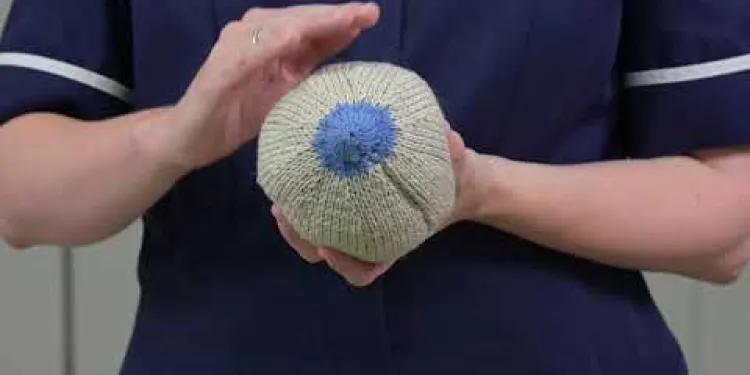
Hand expressing
Relevance: 10%
-

What should I do if I experience side effects after a Botox injection?
Relevance: 9%
-

Can I get Botox while pregnant?
Relevance: 8%
-

What are the common side effects after a facelift?
Relevance: 8%
-

Do chiropractors only treat the spine?
Relevance: 8%
-

Lid hygiene
Relevance: 8%
-

Useful information for patients with lower back pain
Relevance: 7%
-

Advice on neck pain and whiplash
Relevance: 7%
-

Post hand surgery - Stiffness management and trigger finger
Relevance: 6%
-
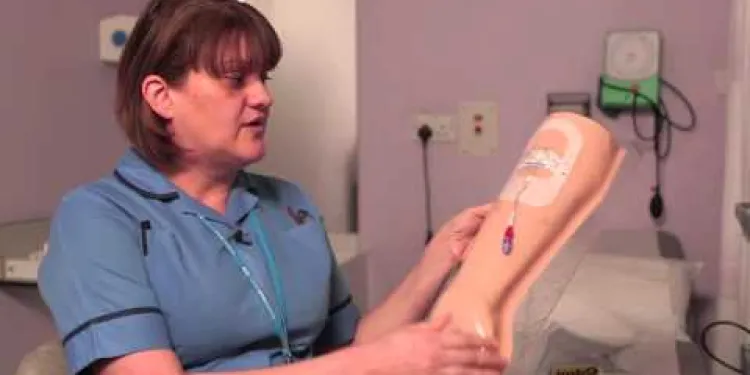
Chemotherapy - The Queen's Centre
Relevance: 6%
-

Does Botox hurt?
Relevance: 6%
-

What precautions should I take before getting Botox?
Relevance: 6%
-

Does Botox injection hurt?
Relevance: 6%
-

What are the uses of cannabis extract?
Relevance: 6%
-

Advice on sports injuries
Relevance: 6%
-
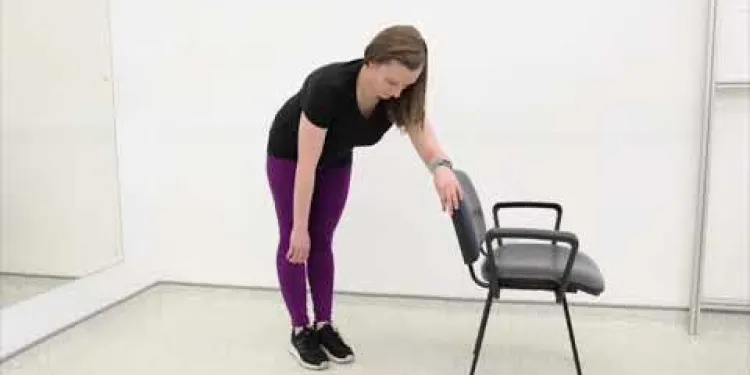
Frozen shoulder Pendular Exercises
Relevance: 5%
-

What non-surgical treatments are available for Carpal Tunnel Syndrome?
Relevance: 5%
-

Can I work or continue sports activities if I have Carpal Tunnel Syndrome?
Relevance: 5%
-

How to inject insulin
Relevance: 5%
-

What are some common conditions treated with homeopathy?
Relevance: 4%
-

Self-care for sprains and strains
Relevance: 3%
-

Can chiropractic care help with arthritis?
Relevance: 3%
-

Can lifestyle changes help manage pain and fever during pregnancy?
Relevance: 3%
-

Lymphoedema: Philippa's story | NHS
Relevance: 3%
-

Osteoarthritis of the Hip
Relevance: 2%
-
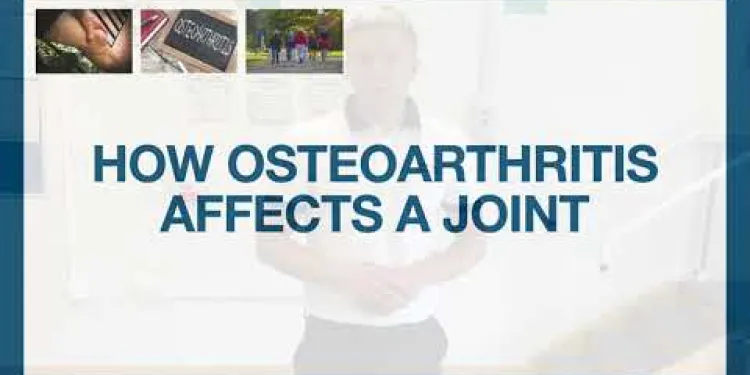
Part One: Understanding Osteoarthritis- MSK Physiotherapy
Relevance: 2%
-

How long does a chiropractic session usually take?
Relevance: 2%
-

What treatments are available for motor neurone disease?
Relevance: 2%
-

Chiropractic Care on the NHS
Relevance: 2%
-

How to treat back pain | NHS
Relevance: 2%
-
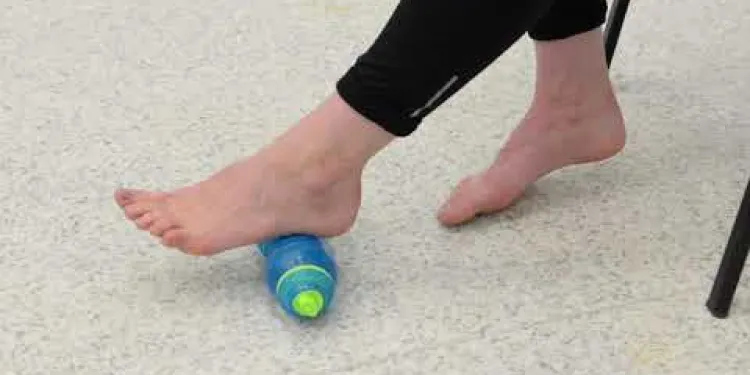
Plantar Fascia Cold Therapy
Relevance: 2%
-

Mechanical Lower Back Pain
Relevance: 2%
-

How long does it take to recover from a Caesarean birth?
Relevance: 2%
-

How can I manage pain after a C-section?
Relevance: 2%
-

Facial exercise programme
Relevance: 2%
-

Useful information for patients with lower back pain
Relevance: 2%
-

Elbow
Relevance: 2%
Understanding NHS Colic Massage Demonstration
Colic is a common issue faced by infants, causing them to cry excessively for no apparent reason. In the United Kingdom, the NHS provides valuable guidance on techniques to help alleviate this distress. Colic massage is one such technique which can offer comfort to your baby. Below, we explore the details of the NHS colic massage demonstration and its benefits.
What is Colic Massage?
Colic massage is a gentle, soothing form of massage aimed specifically at relieving the symptoms of colic in babies. It involves a series of light, circular movements and strokes on the baby's abdomen. This technique helps to move trapped wind, ease bloating, and reduce discomfort. The NHS recommends this method as part of a broader range of strategies to manage colic.
How to Perform Colic Massage
To perform colic massage successfully, ensure your baby is in a calm state. You can follow these simple steps:
- Select a quiet environment: Make sure the room is warm and your baby feels comfortable.
- Warm your hands: This helps to avoid any discomfort caused by cold hands.
- Use gentle pressure: Using your fingertips, apply a gentle, circular motion around your baby’s belly button. Move in a clockwise direction, which follows the natural path of the intestines.
- Follow a pattern: You can use the "I Love You" technique, where you trace the shapes of the letters I, L, and U on your baby’s abdomen, ensuring you follow the clockwise motion.
- Leg exercises: Combine massage with leg exercises by gently pushing your baby's knees towards their tummy. This helps to expel trapped wind.
Benefits of Colic Massage
Colic massage offers several benefits for both the baby and the parent:
- Reduces Discomfort: It can significantly alleviate the baby’s discomfort by helping to promote proper digestive function and reducing gas buildup.
- Strengthens Bond: The close physical contact during massage helps to strengthen the bond between parent and child. It can be a calming experience for both.
- Non-invasive: Unlike medications, colic massage is a natural, non-invasive way to soothe your baby.
Additional Tips
While colic massage can be greatly beneficial, there are a few additional tips to consider:
- Establish a Routine: Consistency is key. Regular massage can help maintain your baby’s comfort levels.
- Monitor Your Baby: Always watch for any signs of discomfort or reaction to ensure the massage is a positive experience.
- Consult Healthcare Professionals: If colic symptoms persist, seek advice from your GP or health visitor for further support and recommendations.
With the NHS guidelines and proper technique, colic massage can be an effective way to bring relief to your little one, enhancing their comfort and promoting a happier, more peaceful environment.
Understanding Colic Massage from the NHS
Colic is a problem that makes babies cry a lot. The NHS in the UK can help. They show how to do a special massage to help your baby feel better. We will explain what colic massage is and how it can help your baby.
What is Colic Massage?
Colic massage is a gentle way to help babies with colic feel better. It's a soft massage on the baby's tummy. You make light, round movements with your hands. This helps move air in the tummy and makes the baby feel less bloated. The NHS says this can help with colic.
How to Do Colic Massage
To help your baby with colic massage, make sure they are calm. Follow these easy steps:
- Quiet Room: Be in a quiet and warm room where your baby is comfy.
- Warm Hands: Warm your hands first, so they feel nice on your baby’s skin.
- Gentle Touch: Use your fingertips to make soft, round moves on your baby’s tummy. Move your hands to the right, like a clock.
- Use Patterns: Try the "I Love You" way. Draw the letters I, L, and U on your baby's tummy, following the clock direction.
- Leg Moves: As a bonus, gently push your baby's knees toward their tummy. This can help move out trapped air.
Benefits of Colic Massage
Colic massage can help both you and your baby:
- Less Discomfort: It helps the baby’s tummy feel better and reduces gas.
- Closer Bond: Massaging your baby brings you closer and is calming for both of you.
- Natural Help: It is a natural way to soothe your baby without medicine.
Extra Tips
Here are more things to help you with colic massage:
- Make a Routine: Do the massage regularly to keep your baby comfy.
- Watch Your Baby: Look for signs your baby is happy or not happy during the massage.
- Ask for Help: If your baby still has colic, talk to your doctor or a health visitor. They can give you more advice.
By following NHS advice, colic massage can make your baby feel better and happier. This creates a peaceful environment for both of you.
Frequently Asked Questions
What is colic massage?
Colic massage is a gentle technique used to help soothe and relieve the discomfort of babies experiencing colic, often involving rhythmic strokes on the baby's tummy.
What are the signs that my baby might benefit from a colic massage?
Signs include excessive crying, difficulty settling, and apparent stomach pain, especially if these symptoms occur at the same time each day.
When is the best time to perform a colic massage on my baby?
The best time is usually after a bath or between feeds when your baby is calm and not too hungry or too full.
How do I prepare my baby for a colic massage?
Make sure your baby is warm and relaxed, on a comfortable surface, with nappy loosened or removed. Ensure your hands are clean and warm.
What is the basic technique for performing a colic massage?
Start with gentle, clockwise circular motions on your baby’s tummy using three fingers, followed by bicycling your baby's legs to help release trapped gas.
How long should each colic massage session last?
Each session can last from 5 to 10 minutes, depending on your baby’s response and comfort level.
Is there a specific oil or lotion recommended for colic massages?
You can use baby-safe oils like coconut oil or grapeseed oil, avoiding oils with fragrances or allergens. Check with a healthcare professional if unsure.
Can colic massage be performed on all babies?
Colic massage is generally safe for most babies, but if your baby has any medical conditions or sensitivities, it’s best to consult a healthcare professional first.
How often can I perform colic massage on my baby?
You can perform colic massage 2 to 3 times a day, especially during times when colic symptoms are most pronounced.
What should I do if my baby seems uncomfortable during the massage?
Stop the massage immediately if your baby seems uncomfortable or distressed, and try again later when your baby is calmer.
Is colic massage supported by the NHS?
While the NHS provides general advice about colic and soothing techniques, always check with your health visitor or GP for personal guidance.
Can colic massage replace medication or other treatments for colic?
Colic massage can complement other soothing techniques but should not replace prescribed treatments. Always follow your healthcare provider's advice.
Can dads or other caregivers perform colic massage?
Yes, colic massage can be performed by any caregiver as long as they are gentle and follow proper techniques.
Are there any other benefits to colic massage besides relieving colic symptoms?
Yes, colic massage can promote bonding between the parent and baby, as well as enhancing relaxation and sleep.
Where can I find more information or a demonstration of colic massage?
The NHS website often provides resources, and you can also ask your health visitor for a demonstration or look for reputable sources online.
What is Colic Massage?
Colic massage is a way to help babies who cry a lot. It is a gentle rub on the baby’s tummy. This can help the baby feel better.
If a baby has a tummy ache, colic massage might help. Remember to be very gentle.
Ask a grown-up to show you how to do it right. You can also use videos to learn.
Colic massage is a kind way to help babies feel better when they have tummy pain. It uses soft and gentle movements on the baby’s tummy.
How can I tell if my baby needs a colic massage?
Does your baby cry a lot and seem very upset? They might have colic. A colic massage could help them feel better.
Here are some signs your baby might need a colic massage:
- Your baby cries for more than 3 hours a day, more than 3 days a week.
- They pull their legs to their tummy when they cry.
- Your baby seems fussy after eating.
- They have a hard tummy and may burp a lot.
If you think your baby has colic, you can try a gentle tummy massage. You could learn how to do this from a nurse or watch a video. Always be gentle and stop if your baby seems more upset.
Signs to look for:
- Crying a lot.
- Hard to calm down.
- Tummy might hurt.
- These things happen around the same time every day.
When should I give my baby a tummy massage?
It's good to give your baby a tummy rub when they are calm and happy. You can try doing it after a bath or nap.
Make sure your baby is not hungry or too full. A little while after feeding can be a nice time, but not right after.
If you feel unsure, ask a doctor or nurse for advice. They can help you learn the best way to do it.
The best time to spend with your baby is after a bath or between meals. This is when your baby is calm and not too hungry or too full.
How do I get my baby ready for a tummy massage to help with colic?
Here is how you can help your baby before a tummy massage:
- Make sure your baby is calm and not too hungry or full.
- Choose a quiet and warm place.
- Lay your baby on their back on a soft blanket.
- Talk or sing to your baby to keep them relaxed.
It might be helpful to:
- Use a little baby oil on your hands.
- Watch a video or read a guide about baby massages.
- Ask a nurse or doctor for advice on how to do the massage.
Remember, always be gentle with your baby.
First, make sure your baby is cozy and calm. Put them on a soft surface. You can take the nappy off or make it loose. Wash your hands well and rub them together to warm them up.
How do you do a simple colic massage?
A colic massage can help a baby with tummy pain feel better. Here is how you can do it:
- Find a quiet and warm place.
- Lay the baby on their back.
- Put a little baby oil or lotion on your hands.
- Rub the baby’s tummy gently in a clockwise circle.
- Do this for a few minutes.
If the baby cries a lot or seems in pain, stop and try another time. You can also talk to a doctor for advice.
Rub your baby's tummy in gentle, round circles to the right using three fingers. Then gently move your baby's legs like they are riding a bicycle. This can help if your baby has gas.
How long should you rub a baby’s tummy to help with colic?
When you are gently rubbing a baby's tummy to help with colic, try to do it for about 10 to 15 minutes. If the baby seems happier, you can rub for a bit longer.
Here are some helpful tips:
- Make sure you and the baby are comfortable.
- Talk or sing softly to the baby to keep them calm.
- Watch the baby’s reaction. If they seem upset, stop and try again later.
Each time, it can take 5 to 10 minutes. It depends on how your baby feels and if they are happy.
What oil or lotion is good for colic massages?
When a baby has colic, they might cry a lot. Some babies feel better with a massage. You can use oil or lotion for the massage.
Here are some good choices:
- Look for baby oil. It is gentle on the skin.
- You can also use coconut oil or olive oil. These are natural and safe.
Always do a patch test first. Put a little bit of oil on a small part of the baby's skin. Wait a day to see if there is any redness or itching.
Use gentle hands when giving a massage.
If you want more help, ask a doctor or a nurse. They can give you advice.
You can use safe oils for babies, like coconut oil or grapeseed oil. Do not use oils with smells or things that might cause allergies. Ask a doctor if you are not sure.
Can you give colic massage to all babies?
Colic massage is usually safe for most babies. But if your baby has health problems or sensitive skin, talk to a doctor before you try it.
How many times can I give my baby a tummy massage?
You can gently rub your baby's tummy 2 to 3 times every day. Do this most when your baby's tummy hurts a lot.
What can I do if my baby seems unhappy during the massage?
If your baby looks unhappy or upset during the massage, stop and try again later. It's important to make sure your baby is happy and calm.
Here are some tips to help:
- Use a soft touch. Be gentle with your hands.
- Talk to your baby. Say nice and calming words.
- Watch your baby. If they look upset, stop and give them a hug.
- Try again later when your baby is more relaxed.
Remember, every baby is different. Some babies might not like massages right away. It's okay to try a little at a time.
If your baby looks upset or doesn't like the massage, stop right away. Try again later when your baby is feeling better.
Does the NHS use colic massage?
Colic massage is a way to help babies who cry a lot. You gently rub their tummy. The NHS is the health service in the UK.
If you want to know if the NHS uses colic massage, you can ask your doctor. They can tell you what is best for your baby.
It is also good to talk to someone who knows about baby massages. They can show you how to do it.
The NHS gives advice about baby colic and how to calm babies. But, it is important to talk to your doctor or health visitor for advice that is just for you.
Can we use colic massage instead of medicine or other treatments for colic?
Colic is when some babies cry a lot. They might be in pain. Massage can help calm babies, but it might not work for everyone.
It is good to talk to a doctor for the best way to help your baby. Sometimes babies need medicine or other treatments. The doctor can help you decide what is right.
An adult can also use tools like picture books or videos to help understand better.
Colic massage can help calm a baby. But don't stop any doctor treatments. Always listen to your doctor's advice.
Can dads or other caregivers help with colic massage?
Dads and other people who take care of babies can help with colic massage.
Here is how they can help:
- Use gentle hands. This means rubbing the baby’s tummy softly.
- Follow simple steps. Caregivers can follow easy instructions to do the massage.
- Watch the baby's face. Stop if the baby looks unhappy.
Some tools to help:
- Watch a video. There are videos that show how to do colic massage.
- Use a book with pictures. A book can help show the steps.
Remember, always be gentle with the baby.
Yes, you can give a gentle tummy rub to a baby with colic if you know how to do it correctly.
Does colic massage help with anything else besides colic?
Colic massage can do more than just help with colic. It can also:
- Help your baby feel calm and relaxed.
- Make your baby's tummy feel better.
- Help your baby sleep well.
You can use a soft cloth or baby oil to make it feel nice.
Yes, rubbing your baby’s tummy can help them feel calm. It can also help you and your baby feel closer and help them sleep better.
How can I learn more about colic massage?
If you want to know more about colic massage, you can:
- Look for videos about colic massage on the internet.
- Ask your doctor or nurse for advice.
- Read simple books or guides about colic massage.
Using videos and talking to experts can help you understand better.
You can find help on the NHS website. You can also ask your health visitor to show you. Look for trusted websites online that can help.
Useful Links
- Ergsy carfully checks the information in the videos we provide here.
- Videos shown by Youtube after a video has completed, have NOT been reviewed by ERGSY.
- To view, click the arrow in centre of video.
- Most of the videos you find here will have subtitles and/or closed captions available.
- You may need to turn these on, and choose your preferred language.
- Go to the video you'd like to watch.
- If closed captions (CC) are available, settings will be visible on the bottom right of the video player.
- To turn on Captions, click settings .
- To turn off Captions, click settings again.
More Items From Ergsy search
-

NHS COLIC MASSAGE DEMONSTRATION
Relevance: 100%
-

Can children benefit from chiropractic care?
Relevance: 17%
-

Are there any alternative treatments for Carpal Tunnel Syndrome?
Relevance: 11%
-

Hand expressing
Relevance: 10%
-

What should I do if I experience side effects after a Botox injection?
Relevance: 9%
-

Can I get Botox while pregnant?
Relevance: 8%
-

What are the common side effects after a facelift?
Relevance: 8%
-

Do chiropractors only treat the spine?
Relevance: 8%
-

Lid hygiene
Relevance: 8%
-

Useful information for patients with lower back pain
Relevance: 7%
-

Advice on neck pain and whiplash
Relevance: 7%
-

Post hand surgery - Stiffness management and trigger finger
Relevance: 6%
-

Chemotherapy - The Queen's Centre
Relevance: 6%
-

Does Botox hurt?
Relevance: 6%
-

What precautions should I take before getting Botox?
Relevance: 6%
-

Does Botox injection hurt?
Relevance: 6%
-

What are the uses of cannabis extract?
Relevance: 6%
-

Advice on sports injuries
Relevance: 6%
-

Frozen shoulder Pendular Exercises
Relevance: 5%
-

What non-surgical treatments are available for Carpal Tunnel Syndrome?
Relevance: 5%
-

Can I work or continue sports activities if I have Carpal Tunnel Syndrome?
Relevance: 5%
-

How to inject insulin
Relevance: 5%
-

What are some common conditions treated with homeopathy?
Relevance: 4%
-

Self-care for sprains and strains
Relevance: 3%
-

Can chiropractic care help with arthritis?
Relevance: 3%
-

Can lifestyle changes help manage pain and fever during pregnancy?
Relevance: 3%
-

Lymphoedema: Philippa's story | NHS
Relevance: 3%
-

Osteoarthritis of the Hip
Relevance: 2%
-

Part One: Understanding Osteoarthritis- MSK Physiotherapy
Relevance: 2%
-

How long does a chiropractic session usually take?
Relevance: 2%
-

What treatments are available for motor neurone disease?
Relevance: 2%
-

Chiropractic Care on the NHS
Relevance: 2%
-

How to treat back pain | NHS
Relevance: 2%
-

Plantar Fascia Cold Therapy
Relevance: 2%
-

Mechanical Lower Back Pain
Relevance: 2%
-

How long does it take to recover from a Caesarean birth?
Relevance: 2%
-

How can I manage pain after a C-section?
Relevance: 2%
-

Facial exercise programme
Relevance: 2%
-

Useful information for patients with lower back pain
Relevance: 2%
-

Elbow
Relevance: 2%


